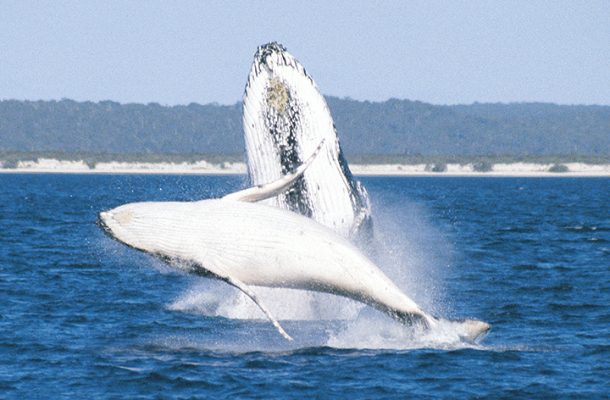Researchers have a whale of a time

Southern Cross University marine researchers have successfully developed a process that will allow them to more accurately identify one humpback whale from another.
It involves a detailed compilation of photographic images of all-natural marks on an individual humpback whale that are then catalogued and investigated, using multi-feature artificial intelligence (AI) algorithms to match each whale’s individual markings.
According to lead researcher Dr Trish Franklin, it’s comparable to using human face recognition technology for the identification of an individual humpback whale.
The paper in the Journal of Cetacean Management and Research aims to manage the potential for misidentification of individual mammals and to contribute to development of advanced AI algorithm photo-matching technologies.
“In this study we investigated and examined the long-term stability and/or changes in natural marks from a sample of 79 individual humpback whales, over timespans ranging from two to 21 years,” Dr Franklin said.
“The results from systematic long-term photo-identification of Southern Hemisphere humpback whales in Hervey Bay, using an innovative matching system, show how ventral-tail flukes, dorsal-fin shapes and lateral body marks can be used together as ‘complementary’ tags in the photo-identification process.”
It’s all part of The Oceania Project in which Dr Franklin has played a vital role in the massive long-term task of collecting and compiling photographic images of more than nearly 700 individual humpback whales over 25 years in Hervey Bay on Queensland’s south east coast.
But Dr Franklin believes the use of this AI algorithm individual identification process has far reaching implications for observing populations of other marine life.
“These advanced techniques could replace hundreds or thousands of hours of visual curation with just a few automated hours of computation,” Dr Franklin said
“It provides a template for other species monitoring efforts to systematically move from fully manual curation of photos to prepare for a new generation of machine algorithms that can quickly and with high accuracy answer the question; which individual animal is this?”
Also integral in achieving this outcome and ongoing research is the expertise of internationally-renowned marine scientist Professor Peter Harrison , PhD researcher Ted Cheeseman and co-authors of the paper, Dr Dan Burns of Southern Cross University and, Jason Holmberg of WildMe.org.
A vital application of these AI algorithm photo-matching techniques is to engage citizen scientists onboard whale watch vessels, particularly in Hervey Bay, in the long-term tracking of known individual humpback whales.
“This will provide long-term data for the monitoring and on-going study of the eastern Australian humpback whale population as it faces severe impacts from climate change,” said Dr Franklin.
The team is seeking to attract more grant funding to continue its ground-breaking research.
The 2021 northern migration of humpback whales along Australia’s east coast, from Antarctica to the Great Barrier Reef and beyond, is to starts in June.
The humpback whales travel north from June to mid-August and south from mid-August to early November each year.
Open Forum is a policy discussion website produced by Global Access Partners – Australia’s Institute for Active Policy. We welcome contributions and invite you to submit a blog to the editor and follow us on Twitter, Facebook, Linkedin and Mastadon.













